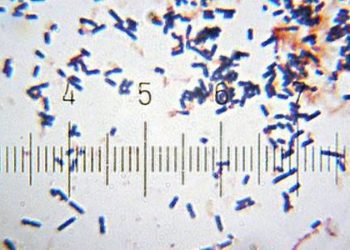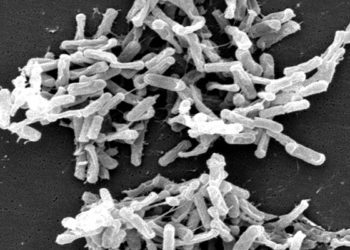Key gut bacteria may prevent Clostridium difficile infection
1. The reduction of the gut bacterium, C. scindens, following antibiotic treatment was correlated with increased risk of C. diff in both mice and humans, and the transfer of this bacterium was linked to reduced C. diff infection in antibiotic-exposed mice.
2. The abundance of secondary bile acid, which requires C. scindens for synthesis, was greater in C. diff-resistant mice than in C. diff-susceptible mice.
Study Rundown: C. diff infection, associated with antibiotic-treatment, often results in severe diarrhea and increased mortality rates in elderly hospital patients. It has been previously shown the complex community of microbes that coexists in the gut, the microbiome, protects against C. diff infection; however, the mechanisms or specific bacterium behind this protection remain unknown. This study examined the specific effects of antibiotics on the human and mice microbiomes, showing when antibiotics were taken, the protective microbiome was disrupted and the likelihood of C. diff infection increased. Through a series of mouse experiments and one clinical study, the authors found the bacterium, C. scindens, was present in the mouse and human microbiomes and was linked to protection from C. diff infection. In a later mouse study, researchers transferred C. scindens into antibiotic-treated mice and were able to prevent C. diff infection. C. scindens performs a rare function among gut bacteria, producing enzymes necessary to synthesize secondary bile acid. This study found the abundance of secondary bile acid was correlated with an increased resistance to C. diff in mice, highlighting the potential mechanism through which C. scindens protects against C. diff.
Although the clinical study showed that C. scindens was associated with resistance to C. diff infection in humans, no human bacterial transfer experiments or secondary bile analysis were performed. This research provides an exciting novel avenue for predicting and treating C. diff infection. For example, measuring the presence of C. scindens may serve as an indicator of susceptibility to infection. Separately, C. scindens bacterium or its products have the potential to be developed as a therapeutic agent.
Click to read the study in Nature
Relevant Reading: Role of the Intestinal Microbiota in Resistance to Colonization by Clostridium difficile
In-Depth [animal study]: This study first showed the administration of certain antibiotics (particularly, clindamycin and ampicillin) in mice led to different susceptibilities to C. diff infection, and to different distributions of bacteria in the microbiome. The length of the susceptibilities also varied, but in all cases, the eventual return to infection resistance corresponded to the recovery of the pre-antibiotic microbiome composition. Computational methods were applied to mouse and human datasets to identify a microbiome bacterium, C. scindens, associated with strong resistance to C. diff infection. The human dataset comprised microbiome data from a cohort of 24 patients undergoing allogeneic hematopoietic stem-cell transplantation, half of which, after antibiotic treatment, developed C. diff infections.
In a separate experiment, following the exposure of 10 animals per group to antibiotics, C. scindens or no additional bacteria were transferred to the animals. Upon challenge with C. diff, animals with transferred C. scindens exhibited significantly lower C. diff bacterial loads (p < 0.05), and higher resistance to infection. Further analysis of the first mouse dataset showed that genes encoding the function to produce secondary bile acids are associated with C. diff resistance. When C. scindens was transferred to antibiotic-treated mice, the presence of secondary bile acid genes was increased (p < 0.01, as compared to a control of no bacteria transfer).
Image: PD/CDC
©2012-2014 2minutemedicine.com. All rights reserved. No works may be reproduced without expressed written consent from 2minutemedicine.com. Disclaimer: We present factual information directly from peer reviewed medical journals. No post should be construed as medical advice and is not intended as such by the authors, editors, staff or by 2minutemedicine.com. PLEASE SEE A HEALTHCARE PROVIDER IN YOUR AREA IF YOU SEEK MEDICAL ADVICE OF ANY SORT.



![[Physician Comment] The extent of C. difficile infections may not differ in light of immune status](https://www.2minutemedicine.com/wp-content/uploads/2012/11/x800px-Clostridium_difficile_01-e1353335581537.jpg.pagespeed.ic_.We5DxZl6Ye-350x250.jpg)




